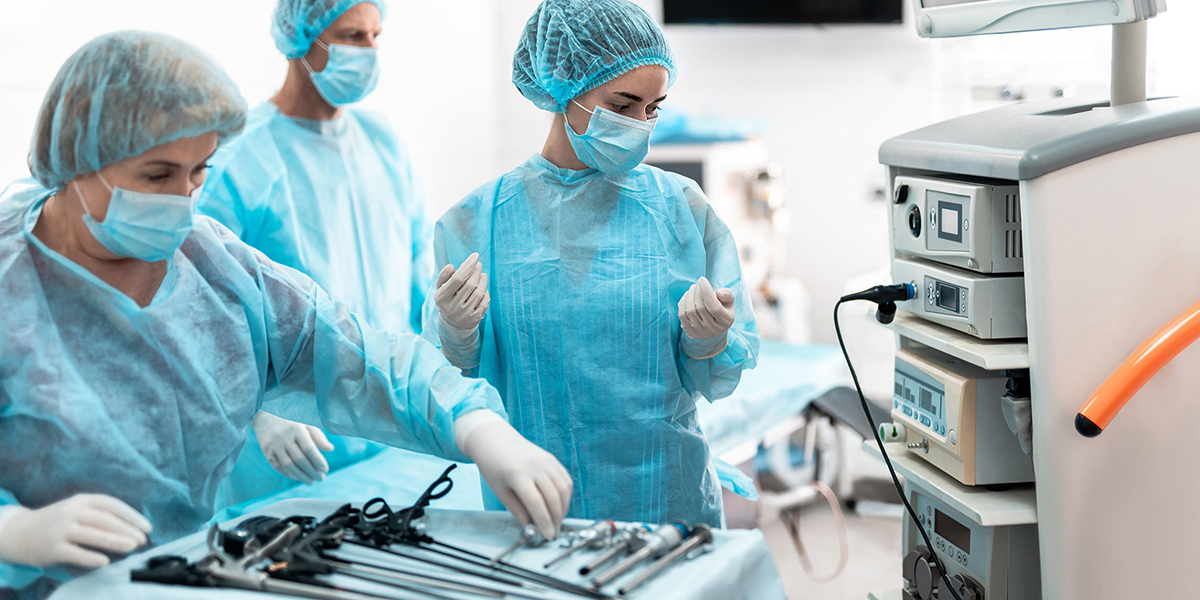Asherman's Syndrome
Asherman’s syndrome is an acquired condition in which scar tissue adhesions form inside the uterus.
About Asherman's Syndrome
Scar tissue can form on the endometrial lining within your uterine cavity as a result of injury. This is often a complication of common medical procedures such as a D&C (dilation and curettage). Many patients with Asherman’s syndrome will experience irregular bleeding or no periods at all, while others can also experience pelvic pain and cramping. The scar tissue can lead to infertility and miscarriage as well as other pregnancy issues including preterm delivery, a peripartum hemorrhage that requires a blood transfusion, and placenta accreta, in which the placenta implants too deeply in the uterine wall.
Symptoms of Asherman’s Syndrome
Your symptoms may vary widely and depend on the extent to which scar tissue has fused together.
Symptoms of Asherman’s syndrome may include:
- Increased menstrual cramping or pain
- Infertility
- Little or no menstrual bleeding (known as hypomenorrhea and amenorrhea, respectively)
- Miscarriage
Risk Factors for Asherman’s Syndrome
The most common cause of Asherman’s syndrome is damage to the uterine endometrial lining.
Risk factors for Asherman’s syndrome may include:
- Health history: Surgeries such as dilation and curettage (D&C) and myomectomy, radiation therapy, or pelvic infections of the uterus can all be common causes that may result in uterine scarring and increase one’s risk of Asherman’s syndrome.
Treating Asherman’s Syndrome
The main goal of treatment is to remove the scar tissue and restore your uterus to its normal shape. Treatment for Asherman’s can help relieve pain, restore your normal menstrual periods, and allow for the possibility of pregnancy if desired by the patient.
To detect the scar tissue inside the uterus, the doctor will likely perform either a gynecological ultrasound (also known as a sonohysterogram or hysterosonogram) or an office hysteroscopy. The adhesions within the uterine cavity can be removed surgically. Some patients may also be prescribed hormone therapy to promote uterine repair, and an intrauterine catheter may be placed temporarily to help keep the walls of the uterine cavity apart and help reduce the risk of recurring scar tissue formation after the procedure. Your care team will work with you to determine the best course of treatment.
Care Team Approach
Patients are cared for by a dedicated multidisciplinary care team, meaning you will benefit from the expertise of multiple specialists across a variety of disciplines. Our board-certified and fellowship-trained gynecologists have extensive experience in performing minimally invasive gynecologic surgery and work alongside a team of women’s health experts, including nurses, advanced practice providers, dietitians, social workers, and more, providing unparalleled care for patients every step of the way.
We collaborate with our colleagues at the Dell Medical School and The University of Texas at Austin to utilize the latest research, diagnostic, and treatment techniques, allowing us to offer a safer and more effective alternative to traditional open surgery by avoiding a large abdominal incision. With minimally invasive gynecologic surgery, patients experience smaller incisions, less pain, less blood loss, shorter hospital stays, faster recovery times, reduced scar tissues, increased surgical accuracy, and less risk of infection or other complications.

